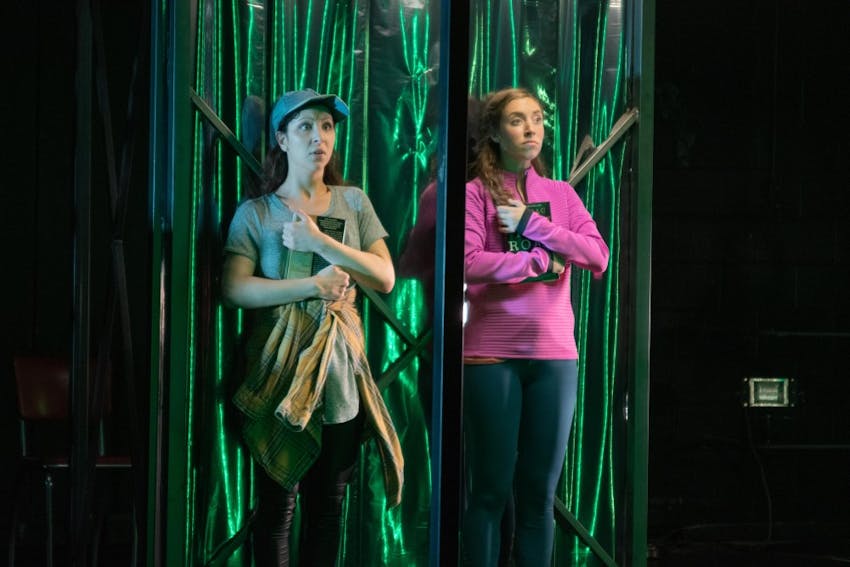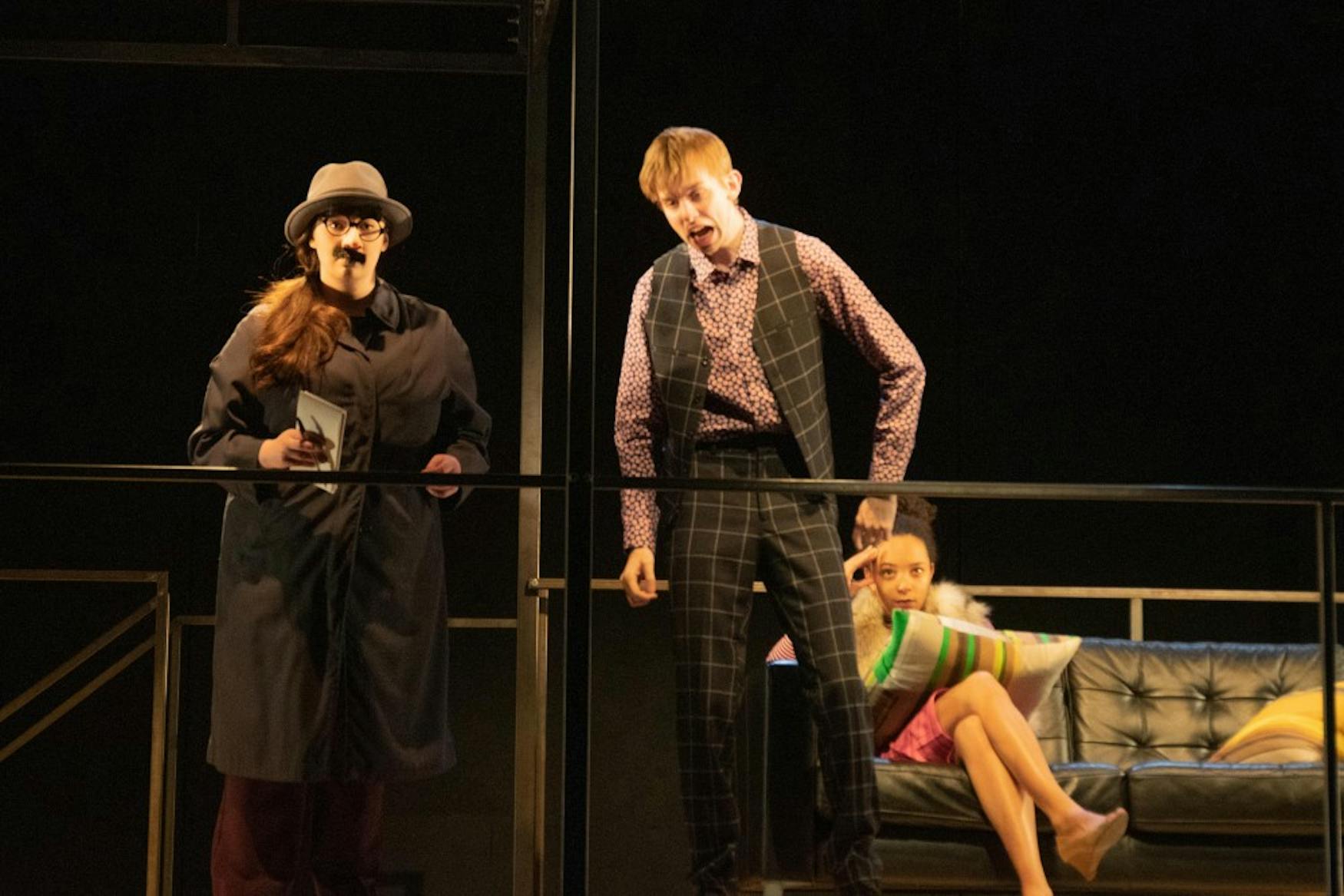“Love and Information” explores unconventional storytelling
Quick question: Do you like Saturday Night Live? How about thought provoking conversations? If both of these things are your forte, you might like “Love and Information.” Sponsored by the Brandeis Department of Theater Arts, “Love and Information” is a play that captures different human experiences, ranging from euphoria to despair to melancholy. A play written by British Playwright Caryl Churchill, the show, which ran Oct. 18-20 in the Laurie Theater, featured a cast of nine students and was directed by Brandeis alumnus Caley Chase ’16.

FLOW OF THOUGHTS: The play doesn’t have one clear storyline. Instead, it feels like watching a train of thoughts of the writer acted out by the cast.
The play displayed multiple scenes that range from one to three minutes long, featuring a varied assortment of the nine actors. Prior to each scene, screens to the left and right of the stage would flash with a word or phrase that described the scene, acting as a title. If the word “census” popped on screen, two charcaters would appear, arguing about completing a census. If the word “mother” appeared, a woman’s sister would tell her that she is actually the girl’s mother.
The set was composed of both a ground stage and an elevated stage that could be accessed with a ladder. On the ground stage, the production team placed props like party hats and a stuffed dog on a table located upstage. A television was left unused on the stage until it was needed in a skit, and because of this, the stage appeared to be cluttered. The elevated stage felt more organized, though. There was a couch for the performers to use. During some performances the lighting would change colors, flickering from red to orange, covering every shade in the rainbow. While this was a deliberate creative choice, it did not seem to be done meaningfully.

EMOTIONS AND MESSAGES: The theme of the play surrounds the emotions that we convey when receiving messages and how the message we put out can affect the emotions of others.
“Love and Information” was an acquired taste. The fact that nine performers were acting as multiple different and nameless characters can be overwhelming for viewers. You never had enough time to become attached to a specific character or plot, so it felt like a whirlwind. I noticed that some actors in the scenes were stronger performers than others. Actors who stood out particularly were Rachel Greene ’20 and Zach Garity ’20. Both showed a level of skill that surpassed the rest of the cast. Everytime they were in a scene, all eyes were on them. Alaysia Penso ’23 also captured the audience’s attention, showing promise as a freshman. All three appeared in the scene “Recluse,” making for an engaging skit.
One of the sequences that was memorable was the skit “Gene,” which featured Garity reading DNA sequences from a book. The story was met with nonstop laughter and even some applause throughout. The previously mentioned skit “Mother” also intrigued viewers, and “Fired,” which featured a brash woman who was outraged after being fired via email, made everyone laugh. “God,” which was about two characters discussing whether they believed in God, was a skit that everyone could relate to because most people have had difficult conversations about religion. “Virtual” was a skit about a person attracted to a virtual assistant, similar to the film “Her.” There were a couple of skits titled “The Boy Who Didn’t Know...” and these acts tackled the concepts of pain and fear. They were each funny and thought-provoking, allowing the audience to contemplate universal phenomenons, like fear and pain, that we take for granted.
Most of what “Love and Information” had to offer was decent. The main problem emerged from the format. Variety shows can get away with skits because they are light-hearted. However, the skits became tiresome after a while. Some scenes are either boring, too ambiguous or both. Skits about a boy visiting his grandmother in the middle of nowhere or a woman questioning whether her significant other was cheating felt like uninteresting segments that lacked creativity. However, when the scenes were engaging, they enthralled the audience.
Like all things in life, “Love and Information” required the viewer to endure both the good and the bad. If you could stay awake through the dull moments, you could enjoy the gems.



Please note All comments are eligible for publication in The Justice.